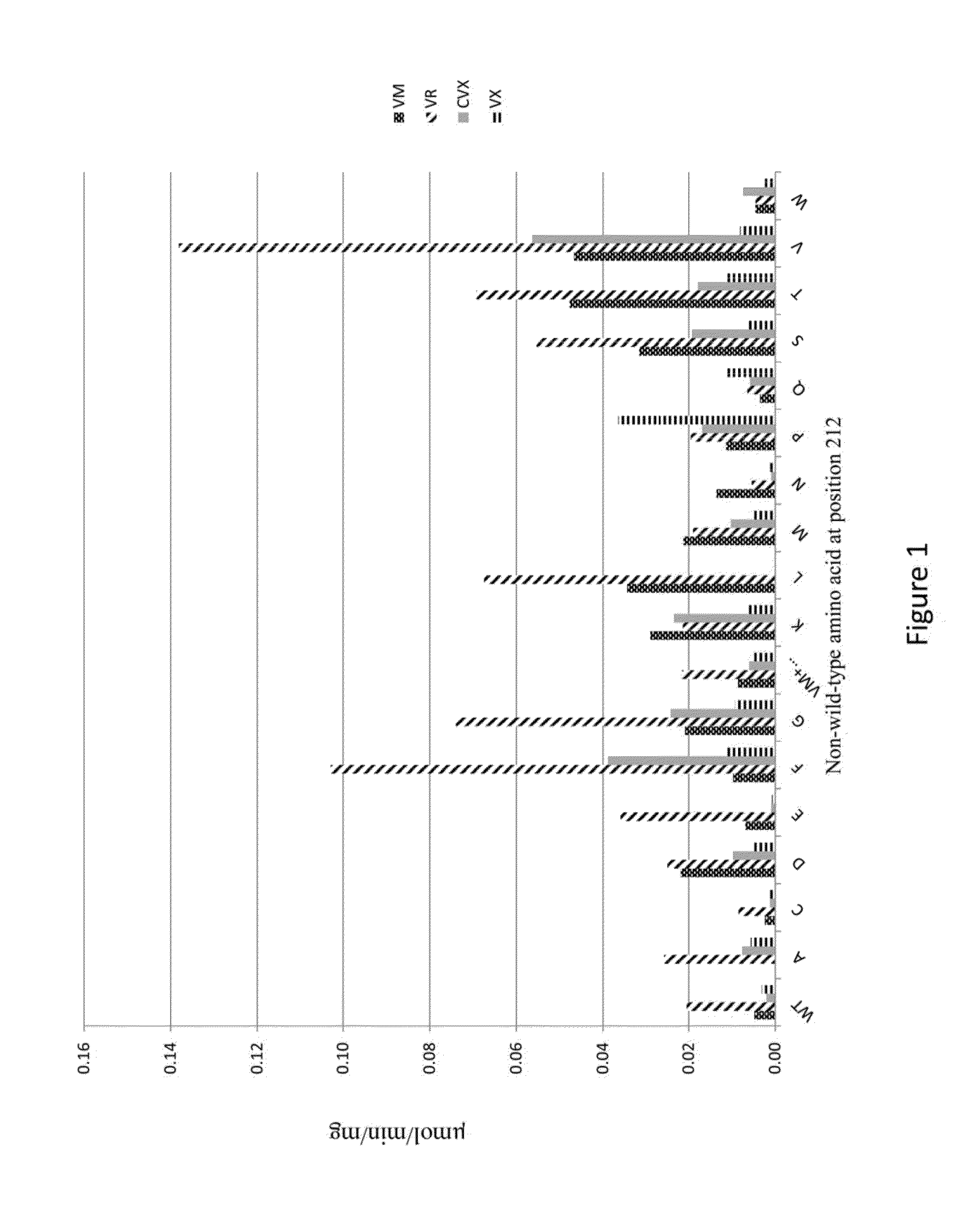Non-wild-type organophosphorus acid anhydrolases for enzymatic decontamination
- Summary
- Abstract
- Description
- Claims
- Application Information
AI Technical Summary
Benefits of technology
Problems solved by technology
Method used
Image
Examples
example 1
Production of OPAA Mutant Sequences
[0079]A truncated version of the OPAA gene was chemically synthesized with the cloning sites RcaI and EcoRI and subsequently cloned into the respective sites in a pSE420 expression vector (Life Technologies Grand Island, N.Y.). Two initial sites were selected for mutagenesis in OPAA—Y212 and Y292. The tyrosines of these sites were mutated to an A, C, D, E, F, G, H, K, L, M, N, P, Q, S, T, V, or W. A pair of single site saturation libraries were created at these sited by incorporating degeneracies into a nucleic acids sequence at that codon.
[0080]An E. coli DH5α culture containing the OPAA containing the pSE420 plasmid was grown at 37° C. in 10 L of LB containing 0.1 mg / mL ampicillin and 0.1 mM MnCl2. Cells were grown to mid-log phase (A600=0.5) and induced with 1 mM IPTG. After four hours of induction, the cells were harvested by centrifugation. The pellet was resuspended 0.1 mM MnCl2 and 10 mM Bis-Tris Propane, pH 8 (Buffer A) and disrupted by thr...
example 2
Activity of Non-wild-type OPAA Constructs Against Various Agents
[0081]The hydrolysis of diisopropyl fluorophosphate (DFP) by OPAA was measured by following the release of fluoride using a fluoride specific electrode for 8 minutes. The assay was performed at 25° C. with continuous stirring in 2.5 mL of 3 mM DFP substrate, 0.1 mM MnCl4, 50 mM ammonium carbonate (pH 8.0) and 0.45 μg (0.03 pM) of enzyme. A reaction without enzyme was performed to measure the background hydrolysis of DFP.
[0082]Additional assays are performed to determine the ability of each non-wild-type OPAA against a V-agent substrate. All assays were conducted in a volume of 500 μL in 1 mL cuvettes. The assay mixture consisted of 50 mM bis-tris-propane buffer, pH 8.0, 100 μM cobalt chloride and 0.3 mM 5,5′-dithiobis-(2-nitrobenzoic acid), enzyme (0.57 to 3.81 mg / ml) and V-agent substrate. The release of the thiol product of V-agent hydrolysis was followed by spectrophotometer at 412 nm absorbance.
[0083]Results for the...
PUM
| Property | Measurement | Unit |
|---|---|---|
| Catalytic activity | aaaaa | aaaaa |
Abstract
Description
Claims
Application Information
 Login to View More
Login to View More - R&D
- Intellectual Property
- Life Sciences
- Materials
- Tech Scout
- Unparalleled Data Quality
- Higher Quality Content
- 60% Fewer Hallucinations
Browse by: Latest US Patents, China's latest patents, Technical Efficacy Thesaurus, Application Domain, Technology Topic, Popular Technical Reports.
© 2025 PatSnap. All rights reserved.Legal|Privacy policy|Modern Slavery Act Transparency Statement|Sitemap|About US| Contact US: help@patsnap.com


